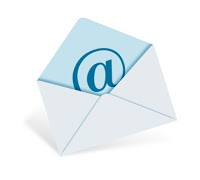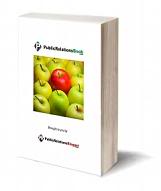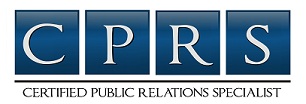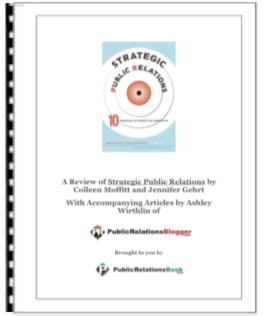________________________________________________________________________
 You know that getting publicity is vital to the health of your business. You probably also know that e-mail is the way most publicity seekers get in touch with reporters to score that precious coverage. Here’s what you don’t know: The vast majority of e-mails sent to journalists never get read.
You know that getting publicity is vital to the health of your business. You probably also know that e-mail is the way most publicity seekers get in touch with reporters to score that precious coverage. Here’s what you don’t know: The vast majority of e-mails sent to journalists never get read.
Bottom line: if your e-mails don’t get read, you have no shot at getting the publicity you so desperately need.
Here's how to beat the odds:
Avoiding the Spam Trap
To a spam filter, your humble e-mail pitch may appear to contain an array of trigger words and suspicious phrases. A server that relayed your message may be on a blacklist - a "do not open" list of known spammers. Or perhaps the filter’s having a tough day and has decided to start blocking things arbitrarily. You can’t prevent every instance of spam blocking, but you can take some steps to help lessen the chances of your e-mail ending up in a black hole.
The most important step is learning how spam filters think, and creating e-mails that avoid the usual pitfalls. Fortunately, you’ll find that -- once you can do this -- many spam triggers are easily avoided.
Rather than taking up space here with all the how-to’s, allow me to simply direct you a terrific site on the subject here.
Getting Your E-Mail Opened & Read
After beating the spam filter, next up is getting your e-mail opened and read. The key: the subject line. No matter how on- the-money your pitch, a subpar subject line will kill any chance of getting the reporter’s attention. You’ve got one shot at getting your e-mail opened, make the most of it with a killer subject line.
Here’s how to do it: 1) Place the word "News" or "Press Info" or "Story Idea" at the beginning of your e-mail subject line, in brackets e.g.: [Story Idea]:
2) Try to incorporate the reporter's first name also at the beginning of the subject line.
3) If you know the name of the reporter's column, for instance "Cooking with Linda", also try to incorporate that. One more thing -- if the reporter doesn’t write a regular column, try to at least include their beat (e.g. Joe, re: your future pieces on the wi-fi industry).
With these three tips in mind, a successful e-mail subject line might read:
[Story Idea]: Linda, Here's a Tip for Your "Cooking with Linda" Column
That’s a heading that will stand head and shoulders above the rest.
Here are a few more e-mail do’s and don'ts: Do:
* Make the information you place in the subject line short and to the point. Often, reporter's e-mail software cuts off the subject at only a few words.
* Don’t get cute or be too vague in your subject line. For example "Here’s a Great Story!" is vague and sounds like spam; "This Will Win You A Pulitzer!" will make you look silly (unless you’re delivering the scoop of the century, of course!).
* Try to make your most newsworthy points at the top of your e- mail message - don't expect a reporter to scroll down to find the news.
* Include your contact information, including cell phone, e-mail address, regular address, fax number & website URL at the beginning and end of the e-mail.
* Include a link to your website if you have additional information such as: photos, press releases, bios, surveys, etc.
Don’t:
* Include more than a short pitch letter or press release in the body of your e-mail.
* Allow typos or grammatical errors.
* Include an attachment with your e-mail. In this day and age of sinister viruses, reporters automatically delete e-mail with attachments.
* Place the following words (by themselves) in the subject line: "Hi", "Hello" - the media's spam filters will pounce and destroy.
* Send an e-mail with a blank subject line.
A cool tip: Use Google News to search for recent stories that have appeared relating to your industry or field of interest. Then, e-mail the reporter directly (use a subject line such as Re: Your July 5th piece on electric cars). Give positive feedback on the story and let him know that, next time he’s working an electric car story, he should get in touch, as you’re an expert with provocative things to say. Give a couple of supporting facts to back up the assertion, include your phone number and web link, and ask if he’d like to see a full press kit. This technique really works!
Bill Stoller, the "Publicity Insider", has spent two decades as one of America's top publicists. Now, through his website, eZine and subscription newsletter, Free Publicity: The Newsletter for PR-Hungry Businesses, he's sharing -- for the very first time -- his secrets of scoring big publicity. For free articles, killer publicity tips and much, much more, visit Bill's exclusive new site.
Article Source.
Tags: email, public relations stories, having an edge, reporters, PR
Public Relations Tips to Getting Your Emails Opened by Reporters
________________________________________
 You know that getting publicity is vital to the health of your business. You probably also know that e-mail is the way most publicity seekers get in touch with reporters to score that precious coverage. Here’s what you don’t know: The vast majority of e-mails sent to journalists never get read.
You know that getting publicity is vital to the health of your business. You probably also know that e-mail is the way most publicity seekers get in touch with reporters to score that precious coverage. Here’s what you don’t know: The vast majority of e-mails sent to journalists never get read.Bottom line: if your e-mails don’t get read, you have no shot at getting the publicity you so desperately need.
Here's how to beat the odds:
Avoiding the Spam Trap
To a spam filter, your humble e-mail pitch may appear to contain an array of trigger words and suspicious phrases. A server that relayed your message may be on a blacklist - a "do not open" list of known spammers. Or perhaps the filter’s having a tough day and has decided to start blocking things arbitrarily. You can’t prevent every instance of spam blocking, but you can take some steps to help lessen the chances of your e-mail ending up in a black hole.
The most important step is learning how spam filters think, and creating e-mails that avoid the usual pitfalls. Fortunately, you’ll find that -- once you can do this -- many spam triggers are easily avoided.
Rather than taking up space here with all the how-to’s, allow me to simply direct you a terrific site on the subject here.
Getting Your E-Mail Opened & Read
After beating the spam filter, next up is getting your e-mail opened and read. The key: the subject line. No matter how on- the-money your pitch, a subpar subject line will kill any chance of getting the reporter’s attention. You’ve got one shot at getting your e-mail opened, make the most of it with a killer subject line.
Here’s how to do it: 1) Place the word "News" or "Press Info" or "Story Idea" at the beginning of your e-mail subject line, in brackets e.g.: [Story Idea]:
2) Try to incorporate the reporter's first name also at the beginning of the subject line.
3) If you know the name of the reporter's column, for instance "Cooking with Linda", also try to incorporate that. One more thing -- if the reporter doesn’t write a regular column, try to at least include their beat (e.g. Joe, re: your future pieces on the wi-fi industry).
With these three tips in mind, a successful e-mail subject line might read:
[Story Idea]: Linda, Here's a Tip for Your "Cooking with Linda" Column
That’s a heading that will stand head and shoulders above the rest.
Here are a few more e-mail do’s and don'ts: Do:
* Make the information you place in the subject line short and to the point. Often, reporter's e-mail software cuts off the subject at only a few words.
* Don’t get cute or be too vague in your subject line. For example "Here’s a Great Story!" is vague and sounds like spam; "This Will Win You A Pulitzer!" will make you look silly (unless you’re delivering the scoop of the century, of course!).
* Try to make your most newsworthy points at the top of your e- mail message - don't expect a reporter to scroll down to find the news.
* Include your contact information, including cell phone, e-mail address, regular address, fax number & website URL at the beginning and end of the e-mail.
* Include a link to your website if you have additional information such as: photos, press releases, bios, surveys, etc.
Don’t:
* Include more than a short pitch letter or press release in the body of your e-mail.
* Allow typos or grammatical errors.
* Include an attachment with your e-mail. In this day and age of sinister viruses, reporters automatically delete e-mail with attachments.
* Place the following words (by themselves) in the subject line: "Hi", "Hello" - the media's spam filters will pounce and destroy.
* Send an e-mail with a blank subject line.
A cool tip: Use Google News to search for recent stories that have appeared relating to your industry or field of interest. Then, e-mail the reporter directly (use a subject line such as Re: Your July 5th piece on electric cars). Give positive feedback on the story and let him know that, next time he’s working an electric car story, he should get in touch, as you’re an expert with provocative things to say. Give a couple of supporting facts to back up the assertion, include your phone number and web link, and ask if he’d like to see a full press kit. This technique really works!
Bill Stoller, the "Publicity Insider", has spent two decades as one of America's top publicists. Now, through his website, eZine and subscription newsletter, Free Publicity: The Newsletter for PR-Hungry Businesses, he's sharing -- for the very first time -- his secrets of scoring big publicity. For free articles, killer publicity tips and much, much more, visit Bill's exclusive new site.
Article Source.
Tags: email, public relations stories, having an edge, reporters, PR
Popular choices
- Non Gamstop Casino
- Mejores Salas De Póker
- Casino Non Aams
- Non Gamstop Casinos
- Siti Casino Online Non Aams
- Migliori Siti Casino Online
- UK Online Casinos Not On Gamstop
- Non Gamstop Casino Sites UK
- Non Gamstop Casino Sites UK
- UK Casino Not On Gamstop
- Casinos Not On Gamstop
- Online Casino
- オンラインカジノ
- UK Casino Not On Gamstop
- UK Casino Not On Gamstop
- Reputable Non Gamstop Casinos
- Casinos Not On Gamstop
- Best Non Gamstop Casinos
- Non Gamstop Casino
- Casinos Not On Gamstop
- Slots Not On Gamstop
- Non Gamstop Casino
- Casino Non Aams
- Casinos Not On Gamstop
- Betting Sites Not On Gamstop
- Casino Online Italia
- Casino En Ligne
- Casino En Ligne Belgique
- KYC 인증 없는 카지노
- Sites De Paris Sportif Fiables
Subscribe to:
Post Comments (Atom)






Comments (0)
Post a Comment